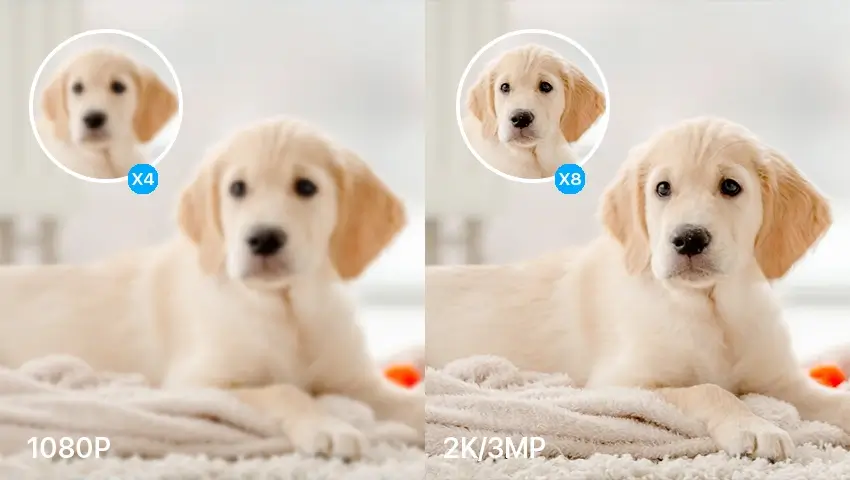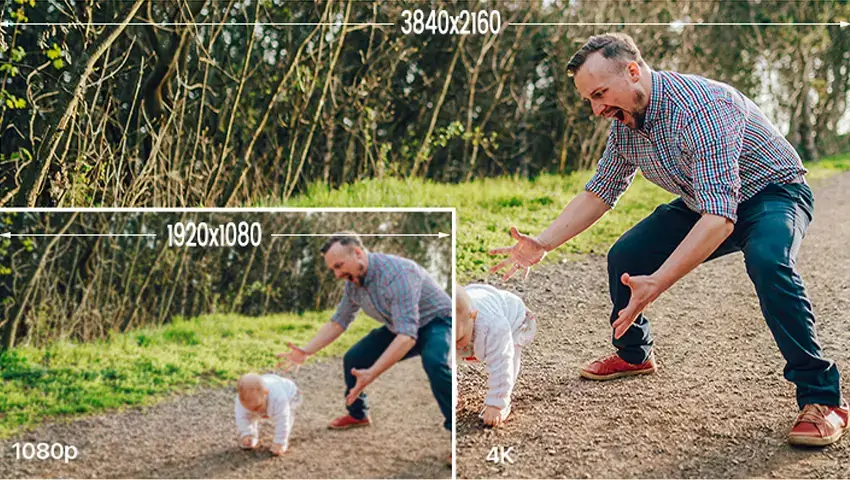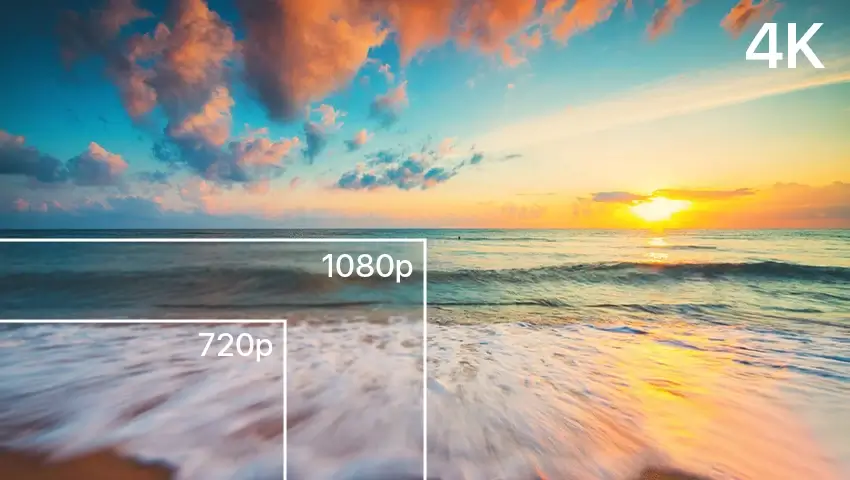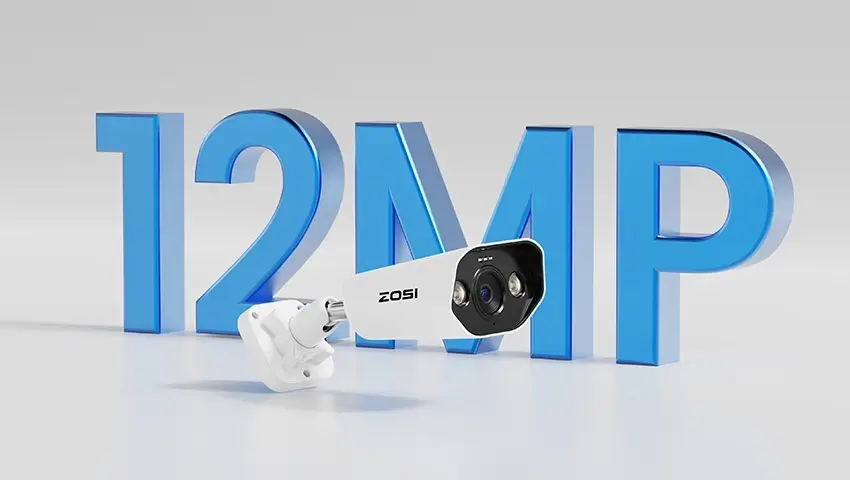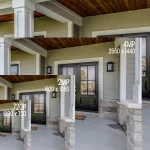In the realm of video surveillance, resolution is more than just a number—it’s the gateway to sharper, clearer images. As the demand for higher-quality surveillance increases, 2K and 1080p resolutions have become two of the most prominent options. This comprehensive guide explores the technical differences, practical applications, and market trends of these two resolutions, helping consumers and businesses make informed decisions.
Contents
What Are 2K and 1080p Resolutions?
1. Resolution Defined
Resolution in video surveillance refers to the number of pixels a camera can display, typically measured as width x height. 2K resolution, also known as Quad High Definition (QHD), offers a pixel count of 2560×1440. In contrast, 1080p resolution, or Full HD (FHD), delivers 1920×1080 pixels. This difference in pixel count directly impacts the level of detail each resolution can capture.
- 2K resolution provides approximately 78% more pixels than 1080p, resulting in crisper, more detailed images.
- 1080p resolution is sufficient for general home surveillance but may fall short in scenarios where high-detail imaging is essential.
2. Image Quality Comparison
When comparing image quality, the higher pixel count of 2K cameras means that images are sharper and clearer. For example, in a scenario where a camera is capturing a person’s face, 2K cameras can retain detail even when zooming in, whereas 1080p images may start to blur.
2K vs 1080p: Key Differences
1. Image Detail
2K resolution delivers a higher level of detail, making it ideal for monitoring environments where capturing fine details is important, such as identifying faces or reading license plates. 1080p, while adequate for basic monitoring, may not provide the clarity needed for such detailed analysis.
2. Applicable Scenarios
- 2K: Ideal for businesses, public safety, and forensic use where high-resolution footage is critical.
- 1080p: Sufficient for general home surveillance, especially in smaller areas with fewer demands for fine detail.
3. Zoom Capabilities
With 2K cameras, you can zoom in without losing as much image clarity. This is particularly beneficial in security scenarios, where being able to zoom in on a specific part of the video feed can make a significant difference in identifying critical details.
4. Storage and Bandwidth
Higher resolution video requires more storage and bandwidth. 2K cameras will consume more storage space and require a stronger network infrastructure to handle the data, especially for real-time monitoring and remote access. On the other hand, 1080p cameras consume less storage and bandwidth, making them more cost-effective for long-term storage and basic setups.
5. Cost
While 2K cameras are generally more expensive upfront, their superior image quality often justifies the additional cost. However, 1080p cameras offer a more budget-friendly option for users who do not need ultra-high resolution.
Practical Applications: 2K vs 1080p
1. Home Surveillance
- 2K: Ideal for users who need to monitor large properties or areas requiring detailed footage, such as driveways or entrances.
- 1080p: Sufficient for smaller homes or areas where capturing fine details isn’t as critical.
2. Business Surveillance
- 2K: For retail stores, warehouses, and office spaces, 2K cameras provide the level of detail necessary to monitor large areas, reduce theft, and improve operational efficiency.
- 1080p: A good option for small businesses where budget constraints exist and detailed monitoring is not required.
3. Public Safety
In public safety scenarios, such as crowd control or traffic monitoring, 2K cameras provide crucial details for post-event analysis and forensic use. These cameras can capture high-resolution footage that may be the key to identifying individuals or tracking vehicles.
2K vs 1080p: Market Trends and Consumer Preferences
The market for 2K surveillance cameras has seen significant growth in recent years, driven by the increasing affordability of high-resolution technology. As consumer preferences shift towards clearer, more detailed video capture, 2K cameras are becoming the go-to option for both businesses and security-conscious individuals.
- Market Trends: The growing demand for higher-resolution cameras is primarily fueled by advancements in technology and competitive pricing. As manufacturers continue to innovate, 2K cameras are expected to become even more accessible to consumers.
- Consumer Preferences: Many consumers, especially businesses, are gravitating towards 2K cameras for their enhanced image quality and ability to capture finer details. For general home security, however, 1080p cameras remain popular due to their lower cost and adequate performance for basic surveillance needs.
Buying Advice: 2K vs 1080p
When selecting between 2K and 1080p, consider your specific surveillance needs:
- Budget: If you’re looking for a budget-friendly option for home security, 1080p cameras might be enough. However, if you need the sharpness and clarity that comes with higher resolution, 2K cameras are worth the investment.
- Purpose: Consider the environment in which the cameras will be used. For general monitoring, 1080p works well. But for high-definition monitoring, such as tracking movement in large or busy areas, 2K is the better choice.
- Future-Proofing: The technology for surveillance cameras is continuously evolving. 2K cameras are already becoming the standard in many professional settings, so investing in them now may help future-proof your surveillance system.
FAQ
1. Is 2K worth the extra cost over 1080p?
For users who need detailed image quality for identifying objects or people, 2K is worth the investment. However, for basic home surveillance, 1080p is often sufficient.
2. Does 2K require more storage than 1080p?
Yes, 2K footage requires more storage and bandwidth, so it’s important to ensure you have sufficient resources to accommodate this.
3. Can I upgrade from 1080p to 2K easily?
In most cases, yes, but you need to ensure your recording devices and video management systems support 2K resolution.
Conclusion
The choice between 2K and 1080p cameras depends on your specific needs. 2K cameras offer superior image quality and are well-suited for businesses, public safety, and other high-demand environments. Meanwhile, 1080p cameras are more affordable and provide adequate resolution for general home security.
As technology continues to advance, 2K and even higher resolutions will likely become more prevalent in the market, making now a great time to invest in higher-quality surveillance solutions.
